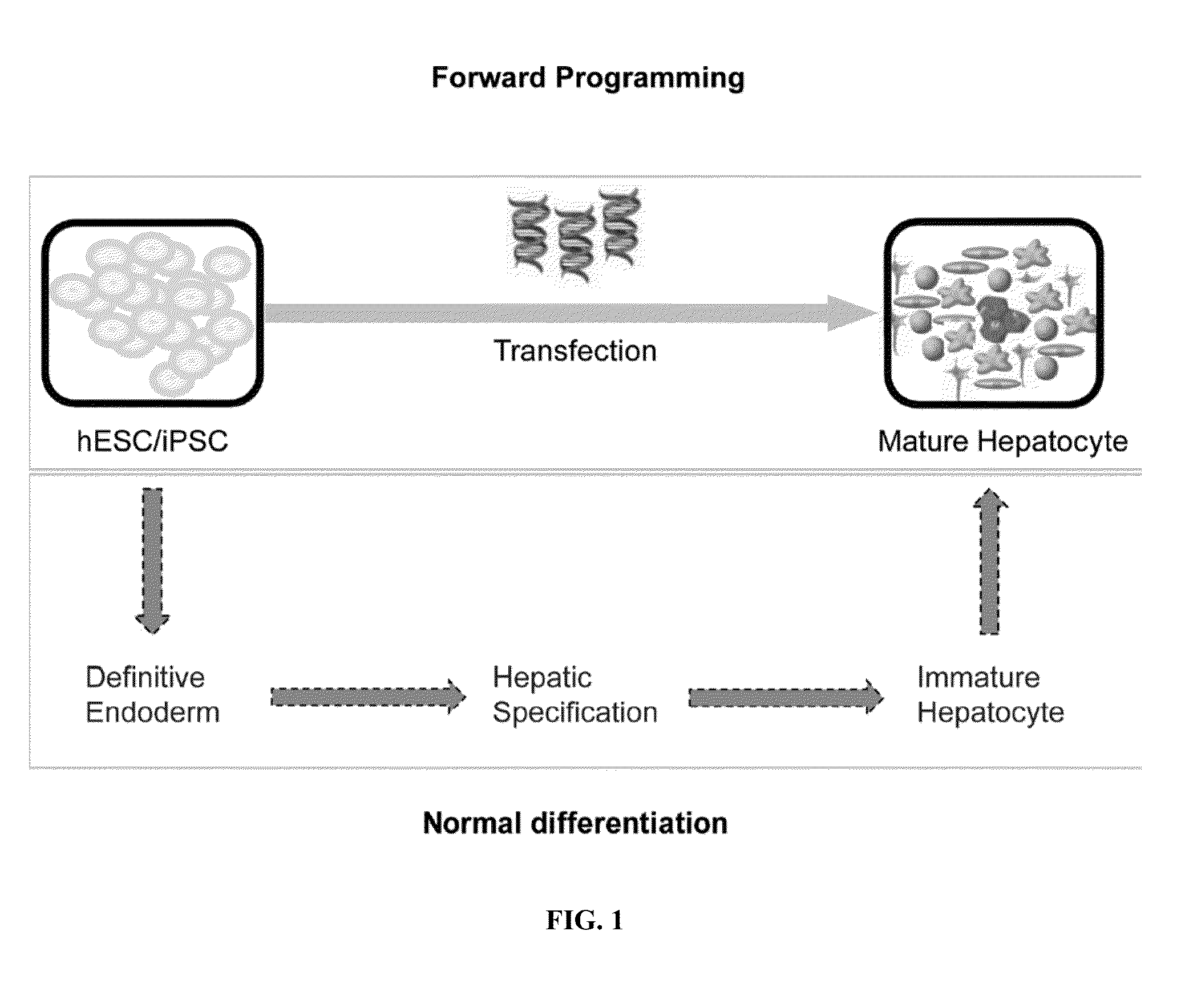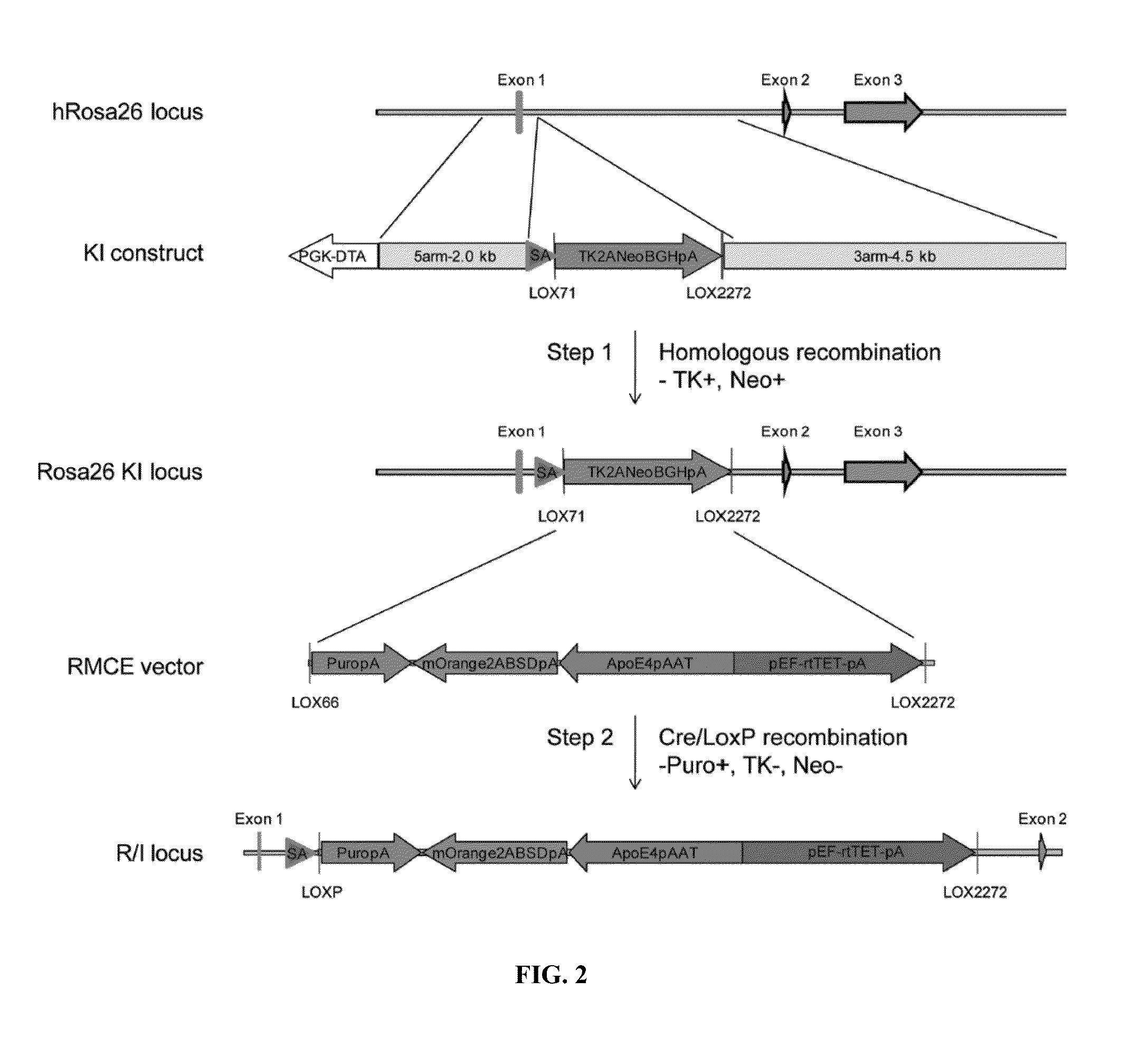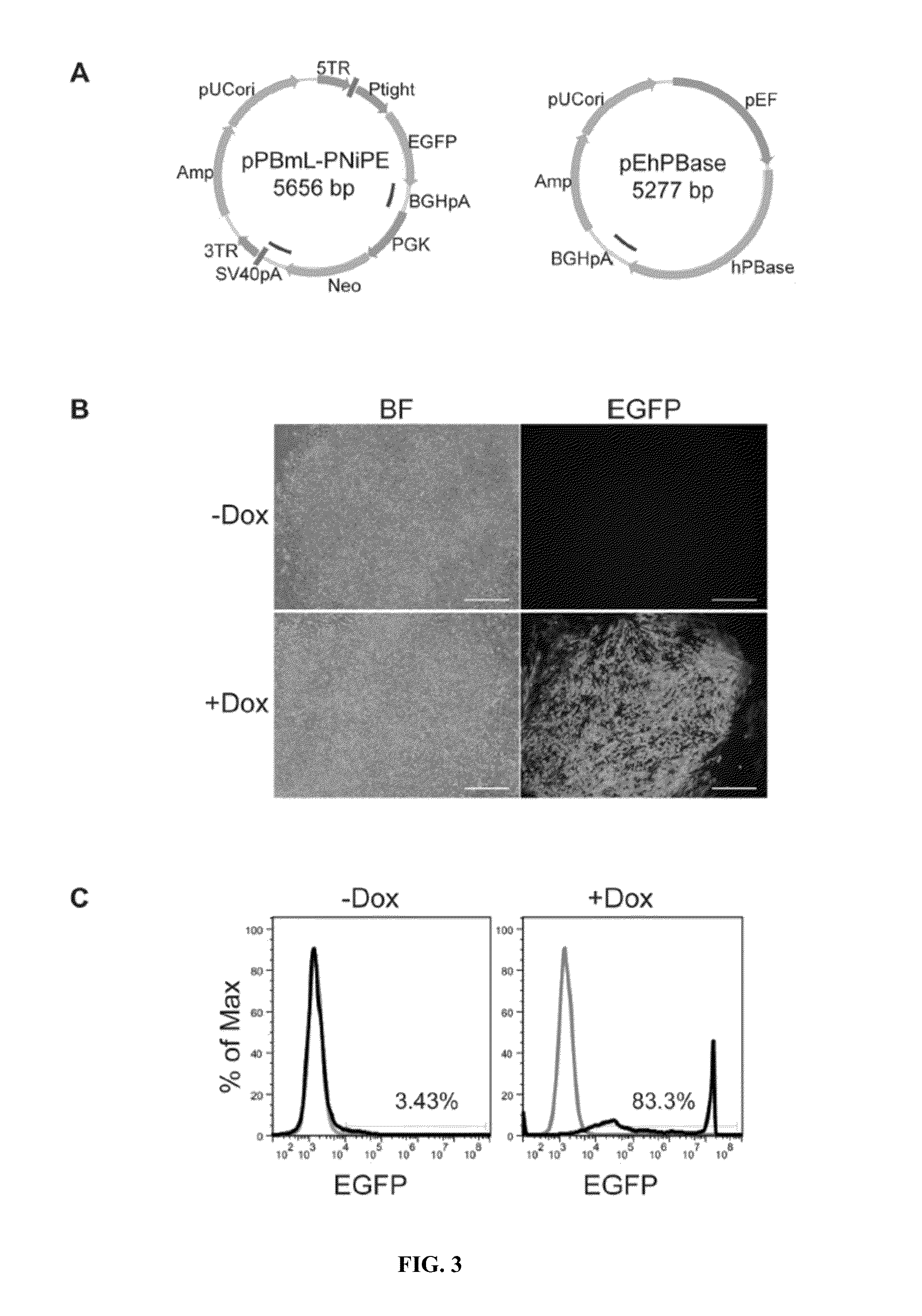Hepatocyte production via forward programming by combined genetic and chemical engineering
a technology of forward programming and hepatocytes, applied in the field of somatic cells and undifferentiated cells, hepatic lineage cells, can solve the problems however, quickly lose their functions, and drug metabolic ability of human primary hepatocytes exhibits significant differences between different individuals, so as to reverse the silencing or inhibitory effect of expression, increase the expression level, and increase the expression of hepatocyte programming factor genes
- Summary
- Abstract
- Description
- Claims
- Application Information
AI Technical Summary
Benefits of technology
Problems solved by technology
Method used
Image
Examples
example 1
Forward Programming of Hepatocytes Via Genetic and Chemical Means
[0289]Alternative approaches for hepatocyte differentiation from human ESC / iPSCs are shown in FIG. 1. Hepatic lineage cells, such as mature hepatocytes, can be efficiently induced from human ESC / iPSCs via expression of an appropriate transgene combination (top box), bypassing most, if not all, developmental stages required during normal differentiation (bottom box).
[0290]Human ESC / iPSC reporter / inducible (R / I) lines were established for hepatocyte differentiation (FIG. 2). The human Rosa26 locus on chromosome 3 was selected to allow the expression of both hepatocyte-specific reporter and rtTET, while minimizing the chromosome location-dependent silencing effect. First, the LoxP recombination sites (LOX71 and LOX2272) were introduced into a site between exon 1 and exon 2 of human ROSA 26 gene via homologous recombination. The targeting construct (KI construct) used the phosphoglycerate kinase promoter (PGK)-driven expre...
PUM
| Property | Measurement | Unit |
|---|---|---|
| average cell cycle time | aaaaa | aaaaa |
| average cell cycle time | aaaaa | aaaaa |
| average cell cycle time | aaaaa | aaaaa |
Abstract
Description
Claims
Application Information
 Login to View More
Login to View More - R&D
- Intellectual Property
- Life Sciences
- Materials
- Tech Scout
- Unparalleled Data Quality
- Higher Quality Content
- 60% Fewer Hallucinations
Browse by: Latest US Patents, China's latest patents, Technical Efficacy Thesaurus, Application Domain, Technology Topic, Popular Technical Reports.
© 2025 PatSnap. All rights reserved.Legal|Privacy policy|Modern Slavery Act Transparency Statement|Sitemap|About US| Contact US: help@patsnap.com



